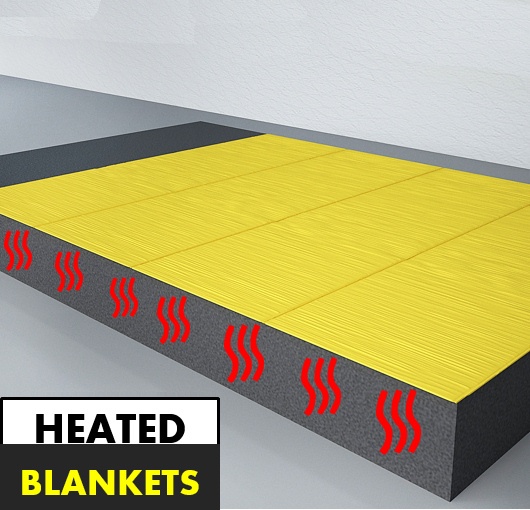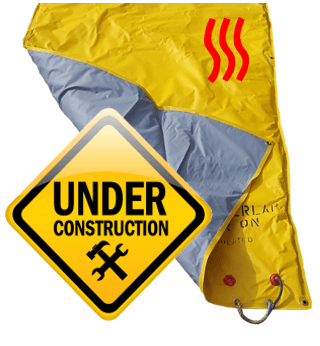
What Temperature Is Too Cold For Concrete Curing?
Studies and Research have shown that the best temperature to pour concrete is 55°F. The mixing of cement and moisture bonds steadily to give concrete its full strength and the temperature is always at 55°F. This bonding is continuous and not observable below 40°F. During daytime when the temperature is good for curing, winter concrete setting puts risk that can cause weak, inadequate concrete. If the temperature is freezing at night, water inside the concrete will freeze and expand causing cracks on the concrete, however, if the temperature is below 40° during curing, the concrete will need more time to reach its full strength. If the right procedures are taken, then there is a possibility that concrete can be successfully placed during cold weather.
Concrete curing projects are planned out before executing, especially in cold months of the year. It is important to work on your strength and consideration in a curing process. This plays a big role when pouring concrete and determines which method to adopt in keeping your surrounding and materials warm. The major challenge faced during cold months in curing is ensuring the concrete sets before it is exposed to freezing temperature.
As you plan your new project take the following into consideration:
- Apply heaters to melt frozen ground, snow or ice.
- Mix cement with hot water.
- All materials should be kept in a warm location.
- Make use of products designed for fast curing. These products will not set as indicated, but will set faster than conventional materials.
- Apply additives that hasten set time. Be cautious; if additives contain calcium chloride, any rear or metal wire mesh in concrete will rust and cause concrete to crack.
- Use more cement. (Typically 100 lb/ cubic yard. This makes the reaction hotter and cause concrete to hydrate more rapidly)
- Wait for the bleed water to evaporate. (Combining the water into the surface during final phase will weaken the surface. Bleeding comes last and takes more time during cold weather; use squeegees or a vacuum to remove water quickly)
- Leave the framework till the concrete has reached full strength. (Early removal will damage the concrete and the surface will collapse)

Concrete Blanket
Concrete blankets are effective when it has to do with maintaining the right temperature for concrete pouring and setting. ALCO concrete blankets can be used to melt snow or ice ground of project site before and after pouring concrete to prevent the concrete from freezing. ALCO Concrete Blankets ensures that concrete is maintained at the appropriate temperature for curing process to take place swiftly and the desired strength is reached. ALCO Concrete Blankets has got you covered during cold weather months for a successful concrete curing.
Implementing the article's instructions will guarantee a successful curing but it is important to keep the concrete at the standard temperature during the curing process. The temperature for concrete should be maintained at 55°F for 48 hours to enable moisture and cement mix appropriately. In cold weather, heated enclosure and insulated blankets are mostly used for concrete curing. Heated enclosure ensures that the structure is wind and waterproof. Ventilation is key in concrete curing, ensure a proper one is available for the space heater. The use of Heaters may cause an increase in carbon dioxide, this will result in carbonation in the surface of the concrete.
